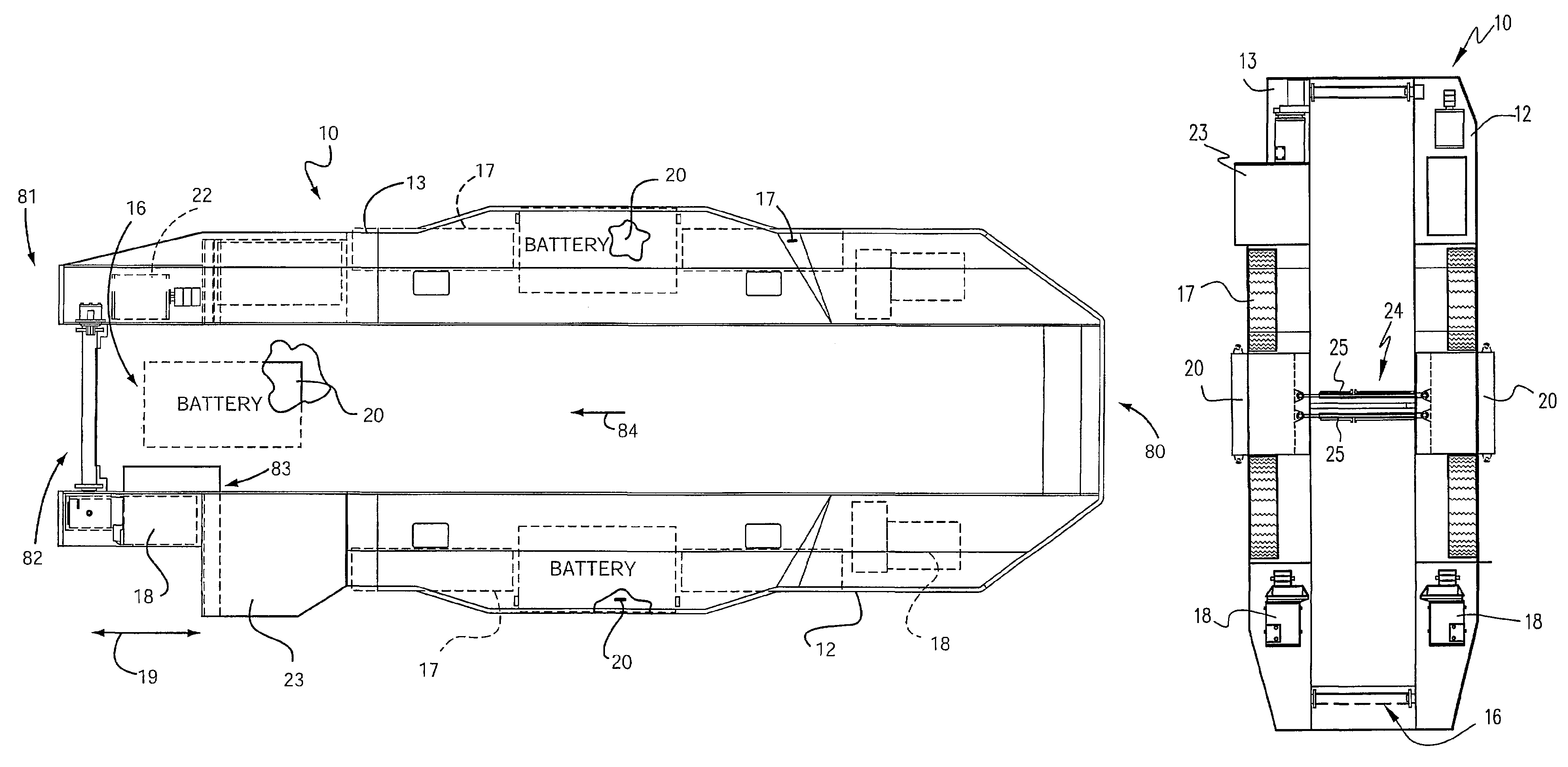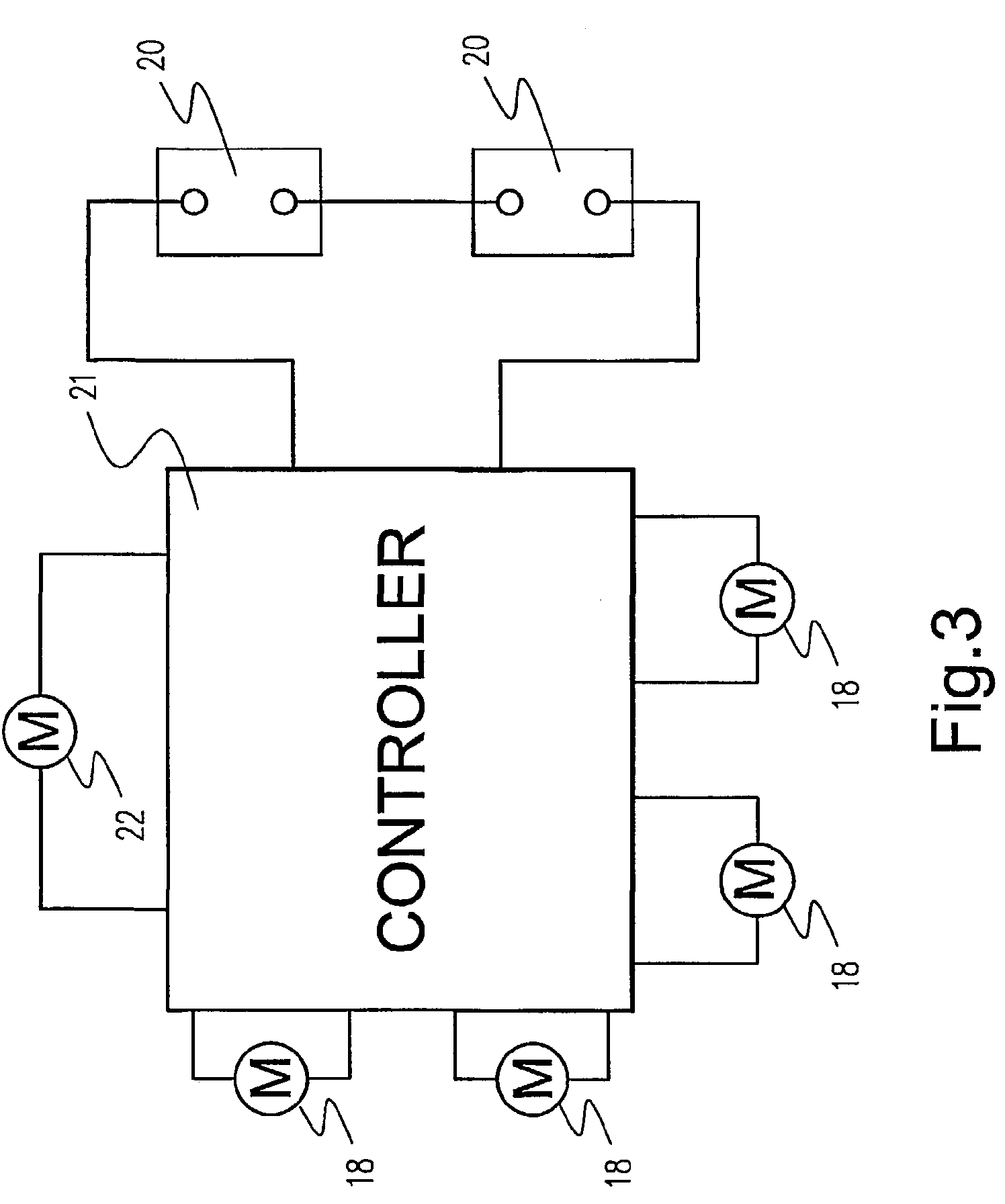Battery powered shuttle car
a shuttle car and battery technology, applied in the field of mining vehicles, can solve the problems of no longer being able to travel independently in the shortest possible distance between, no longer being able to travel independently, and the shuttle car cannot travel in the shortest possible distance, etc., and achieves the effects of uniform tire loading, low vulnerability to damage of the battery, and simple and effectiv
- Summary
- Abstract
- Description
- Claims
- Application Information
AI Technical Summary
Benefits of technology
Problems solved by technology
Method used
Image
Examples
Embodiment Construction
[0041]The particular location of the batteries with respect to the shuttle car, and the motors for powering the wheels of the shuttle car, and the operator's compartment, as well as the quantity of batteries, will depend upon the maximum height restrictions for the coal seam, geological conditions, or other operating environment and the load carrying capacity of the shuttle car. Some particular advantageous configurations in that regard are illustrated in FIGS. 1, 2, 4 and 8-12 of the drawings.
[0042]Particularly with respect to the FIGS. 1 and 2 embodiment, a first embodiment of the battery powered shuttle car 10 is illustrated comprising a frame 11 that includes first and second side portions 12, 13, and any suitable cross portions (shown schematically at 14 in FIG. 1, but alternatively provided by a frame portion 15), and a conveyor of conventional configuration—only shown schematically by reference numeral 16 in FIG. 1, but shown, in one embodiment, in more detail in FIG. 13—betw...
PUM
 Login to View More
Login to View More Abstract
Description
Claims
Application Information
 Login to View More
Login to View More - R&D
- Intellectual Property
- Life Sciences
- Materials
- Tech Scout
- Unparalleled Data Quality
- Higher Quality Content
- 60% Fewer Hallucinations
Browse by: Latest US Patents, China's latest patents, Technical Efficacy Thesaurus, Application Domain, Technology Topic, Popular Technical Reports.
© 2025 PatSnap. All rights reserved.Legal|Privacy policy|Modern Slavery Act Transparency Statement|Sitemap|About US| Contact US: help@patsnap.com



